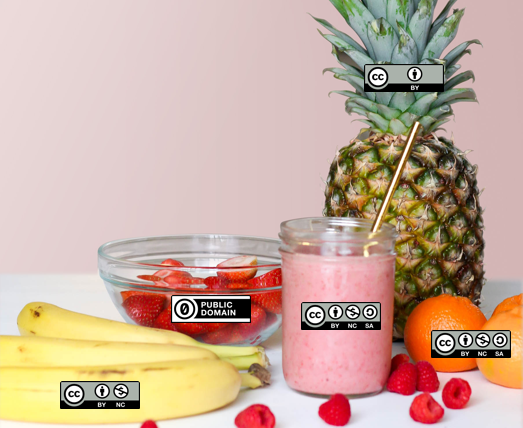
These sources were used to inform this guide. Click the links to learn more.
This page is openly licensed.
Using CC Licensed Works © 2024 by Evangeline Reid is licensed under CC BY-NC 4.0 except where otherwise noted
Using openly licensed materials responsibly requires some attention to detail.
Using sources appropriately depends on the way they are used. The distinction between a collection and adaptation is key.

Bringing together a many sources that are kept intact, unchanged, and separate is a collection or compilation. The original license still applies to each section.
It can be visualized like this TV dinner graphic. You may have already encountered this in a book that bring together chapters from many different authors on the same topic.
“CC TV Dinner” by Nate Angell is licensed under CC BY, and is a derivative of “tv dinner 1″ by adrigu (https://flic.kr/p/6AMLDF) used under CC BY, and various Creative Commons license buttons by Creative Commons (https://creativecommons.org/about/downloads) used under CC BY.
 When a work is changed in some way, such as being mixed with another existing work or new material, that is not a collection. If new creativity was added, it might be referred to as an adaptation, remix, or derivative work. The result is a new work.
When a work is changed in some way, such as being mixed with another existing work or new material, that is not a collection. If new creativity was added, it might be referred to as an adaptation, remix, or derivative work. The result is a new work.
This can be visualized like a smoothie. Each ingredient will have its own copyright considerations. The combined new work will have a new license that respects the original licenses.
The nuances of adaptations can vary between different countries.
“CC Smoothie” by Nate Angell is licensed under CC BY, and is a derivative of “Strawberry Smoothie On Glass Jar” by Element5 (https://www.pexels.com/photo/strawberry-smoothie-on-glass-jar-775032/) in the public domain, and various Creative Commons license buttons by Creative Commons (https://creativecommons.org/about/downloads) used under CC BY.